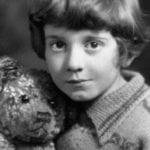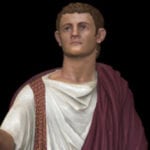 Technology
Technology  Technology
Technology  Humans
Humans 10 Everyday Human Behaviors That Are Actually Survival Instincts
 Animals
Animals 10 Animals That Humiliated and Harmed Historical Leaders
 History
History 10 Most Influential Protests in Modern History
 Creepy
Creepy 10 More Representations of Death from Myth, Legend, and Folktale
 Technology
Technology 10 Scientific Breakthroughs of 2025 That’ll Change Everything
 Our World
Our World 10 Ways Icelandic Culture Makes Other Countries Look Boring
 Misconceptions
Misconceptions 10 Common Misconceptions About the Victorian Era
 Mysteries
Mysteries 10 Strange Unexplained Mysteries of 2025
 Miscellaneous
Miscellaneous 10 of History’s Most Bell-Ringing Finishing Moves
 Technology
Technology Top 10 Everyday Tech Buzzwords That Hide a Darker Past
 Humans
Humans 10 Everyday Human Behaviors That Are Actually Survival Instincts
 Animals
Animals 10 Animals That Humiliated and Harmed Historical Leaders
Who's Behind Listverse?

Jamie Frater
Head Editor
Jamie founded Listverse due to an insatiable desire to share fascinating, obscure, and bizarre facts. He has been a guest speaker on numerous national radio and television stations and is a five time published author.
More About Us History
History 10 Most Influential Protests in Modern History
 Creepy
Creepy 10 More Representations of Death from Myth, Legend, and Folktale
 Technology
Technology 10 Scientific Breakthroughs of 2025 That’ll Change Everything
 Our World
Our World 10 Ways Icelandic Culture Makes Other Countries Look Boring
 Misconceptions
Misconceptions 10 Common Misconceptions About the Victorian Era
 Mysteries
Mysteries 10 Strange Unexplained Mysteries of 2025
 Miscellaneous
Miscellaneous 10 of History’s Most Bell-Ringing Finishing Moves
10 Flame-On Fantastic Four Facts!
Though apparently doomed to never have a good movie, Marvel’s “first family,” the Fantastic Four, has had an amazing array of adventures throughout the years. However, some of the craziest stories came from behind the panels and pages created by some of the most complex creators the world has ever known.
10 The Hidden Film
Most moviegoers are familiar with the disappointing 2005 Fantastic Four film and its sequel. However, the 2005 film was not the first Fantastic Four movie ever made. It was the first one the public saw because of a bizarre bit of rights negotiation.
It all started when German producer Bernd Eichinger bought the film rights for the Fantastic Four back in 1986. He courted companies like Warner Brothers and Columbia Pictures to make the movie, but even the success of Tim Burton’s 1989 Batman could not convince these companies to take a chance on Marvel’s first family. Eichinger’s rights to the characters were set to expire at the end of 1992, so he enacted a plan both crazy and simplistic: He would retain his rights by making a low-budget schlock fest. After all, no one said the movie had to be large or even released, for that matter.
He hired B-movie legend Roger Corman to produce. The film was made for a song, and despite movie trailers advertising a world debut, it was never released. In fact, Marvel executive Avi Arad did one better, buying the complete rights to the film and destroying all the prints. While the cast and crew of this film were unaware of Eichinger’s plan, it worked out for the producer in a big way: it was his company, Constantin Film, which produced the big-budget follow-ups in 2005 and 2007.
9 Invisible Girl Or Woman?
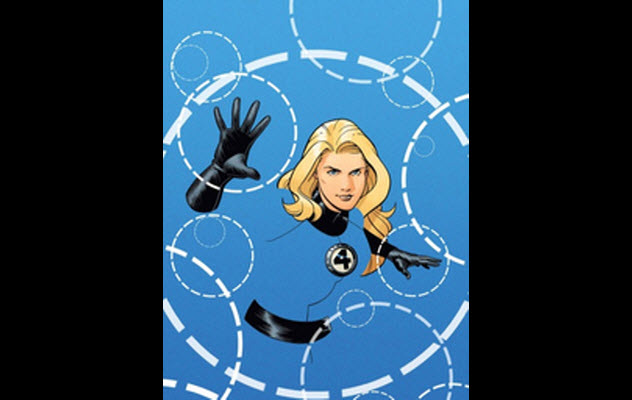
The development of the Invisible Woman’s character and powers is basically the development of slow-burn feminism for Marvel Comics. She was originally more of an appendage to the team than an asset because becoming invisible isn’t especially helpful when your job is exploring things and punching what you find.
After 22 issues of being mostly useless, the writers added her abilities to make others invisible, project force fields, and create psionic blasts. Despite this, she spent an embarrassing chunk of her early adventures being the archetypal damsel in distress, often kidnapped by villains who wanted her as their bride.
When writer John Byrne took over the Fantastic Four, he gave both her powers and personality an upgrade. Her force fields could be used to control and shape matter in the air, stun enemies, or provide devastating long-range attacks. She also developed a more confident, take-charge attitude, changing her superhero name from the Invisible Girl to the Invisible Woman. Through Byrne, Marvel had finally taken some progressive steps toward the female heroine . . . a mere two decades after she debuted.
8 Their Sex Lives Are Weird
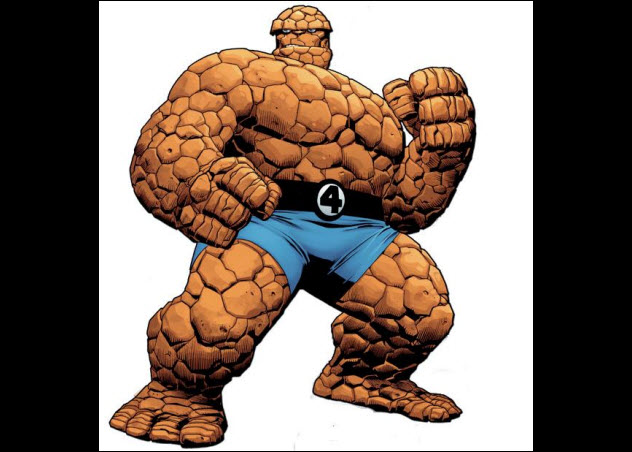
When discussing how superheroes try to lead normal lives, the elephant in the room is always how weird their sex lives must be. Superman can kill someone by looking at them, breathing on them, or touching them with anything less than complete physical control. It’s easy to see, then, why he and Lois remain childless!
The Fantastic Four have prompted similar fan discussions over the years. In the 1995 movie Mallrats, Jason Lee’s character gets a chance to speak to Stan Lee, who is playing himself. Jason Lee posed the ultimate Fantastic Four question about The Thing: “Is his dork made out of orange rock like the rest of his body?” While Stan Lee did not comment on the question in the movie, he did answer it in a definitive 2011 Vanity Fair interview, stating that the penis being made of orange rock is just “common sense.”
Once the seal was broken on weird superhero sex comments in the interview, Lee kept going, confirming what every boy ever reading about Mr. Fantastic’s stretchy powers has always suspected: “He had the ability to stretch, and sexually, that would seem to be a great asset in many areas.”
Throw in the time Invisible Woman ran off to have an affair with Namor and it seems like Marvel’s first family is a lot freakier than they let on!
7 Mr. Fantastic Is A Complete Ass To His Wife And Team
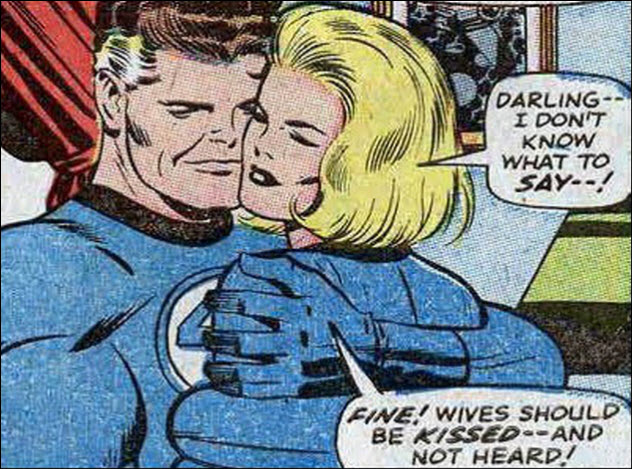
On the surface, Mr. Fantastic is one of Marvel’s most iconic heroes: a scientist, explorer, and definitely the one you want on speed dial when Galactus is trying to eat the world. However, he’s also consistently portrayed as a thoughtless ass.
To start with, none of the fellow Four would have powers if he hadn’t invited them onto his experimental rocket. And while Ben Grimm (soon to be The Thing) was at least a pilot, Reed Richards (before becoming Mr. Fantastic) let his completely unqualified girlfriend and her younger brother tag along, all while Ben Grimm warned him that cosmic rays could do God knows what to their bodies.
Mr. Fantastic’s married life with the Invisible Woman is also bizarre. He spends much of their early years being condescending, with such amazing lines as “wives should be kissed—and not heard!” When she tells him to watch out for enemies on the battlefield, he memorably tells her to “stop sounding like a wife” and fetch him the gun he needs. In some unfortunate panels from a less progressive era, he literally slaps some sense into his wife and child.
Ultimately, Reed Richards is still one of Marvel’s greatest heroes . . . you just have to overlook how he mutates his friends and forces them to dress like him, live with him, and be part of a team named after him. Oh, and all of the physical and mental abuse.
6 Reed And Sue’s Kid Is All-Powerful
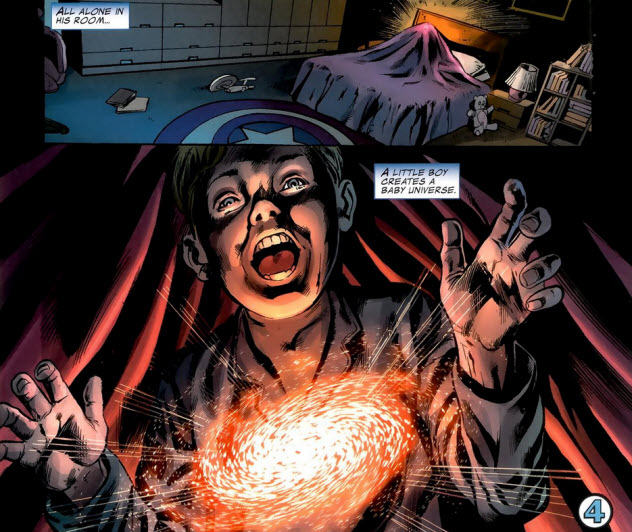
When Mr. Fantastic and the Invisible Woman had a baby, Franklin Richards, he turned out to be a mutant . . . a product of the cosmic rays to which his parents had been exposed. Two things set Franklin apart from other mutants: His powers manifested when he was very young (instead of when he was an angst-ridden teen like most X-Men mutants) and he’s powerful enough to destroy the world.
Depending on who is writing him, Franklin can do almost anything: telepathy, time travel, telekinesis, the ability to rearrange molecules and create pocket universes. He even turned Galactus, destroyer of worlds, into Franklin’s herald!
Franklin is both a threat and an asset to Earth’s heroes because of these powers. At one point, he’s abducted by his grandfather and taken to the future because his existence in the present somehow threatens Earth’s survival. Later, a version of Franklin from the future saves the Earth from Mad Celestials—who are bent on its destruction—by healing the injured Galactus and siccing him on Earth’s enemies.
5 Mr. Fantastic Is A Fascist
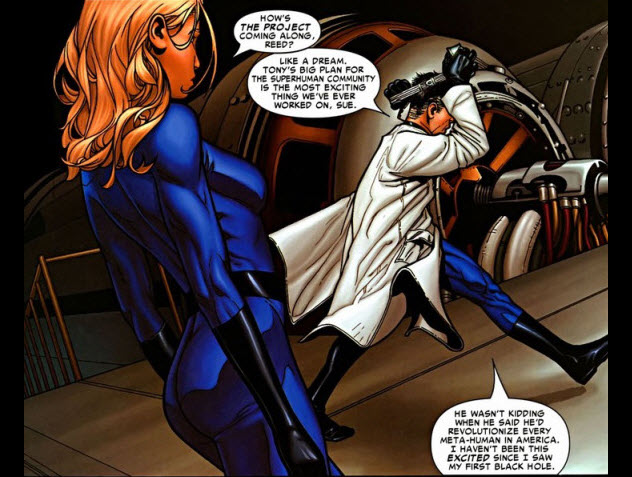
In Marvel’s Civil War comic event, the massacre of children in a fight precipitated by untrained heroes causes Tony Stark and the US government to force everyone with powers to register as SHIELD agents. Stark and the feds see this as a good deal—heroes getting money and benefits—but many heroes bristle at being forced to give up their secret identities. On the other side, most of the pro-registration heroes appear to be tormented about catching and jailing close friends who don’t want to be government pawns.
But not Mr. Fantastic. As he begins construction of a prison for his former friends in the same Negative Zone dimension that he once discovered, he describes his work to Invisible Woman as “the most exciting thing we’ve ever worked on.” Why house the dissidents in another dimension? Because the plan is to exile them from the planet forever. How does Mr. Fantastic feel about this troubling idea? As he tells his wife, “I haven’t been this excited since I saw my first black hole!”
His plans continue apace, and he eventually unleashes a clone of Thor against his friends. The clone promptly kills one of them, the superhero named Goliath. So why is Reed building killer robots, exiling his friends from Earth, and even ignoring The Human Torch, who has been hospitalized during all of this? Well, he did some Beautiful Mind–style math on the walls, and he’s convinced that unlicensed heroes will lead to some nebulous “social dangers.” An understandable fear . . . it’d be terrible if Herr Richards’s trains did not run on time.
4 Dr. Doom Would Rather Conquer The World Than Get Plastic Surgery
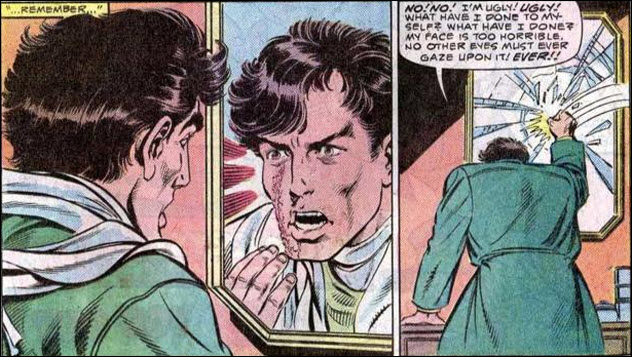
The broad strokes behind the creation of Dr. Doom are well-known. While he and Reed Richards attended Empire State University together, they worked on an insane project to help them communicate with the dead. At the last minute, Reed noticed that his calculations were off and tried to warn Doom to cancel the experiment. Doom did not listen, and the machine blew up, cementing his hatred for Richards and leaving his face a scarred mess that he hides behind his frightening metal mask.
However, in the 1970s, comics legend and Dr. Doom designer Jack Kirby drew his own interpretation of Doom beneath the mask: a handsome man with only a tiny scar. To Kirby, this was indicative of Doom’s great pride. It only took the tiniest scar to make him feel rage and contempt for a world now more beautiful than he, which turned him into a supervillain.
In the 1980s, comics writer John Byrne ran with this idea, claiming that the accident had left only a small scar and that Doom had put on his newly forged mask before it cooled, scarring his entire face. After he made boneheaded mistakes like that, it’s no surprise that the first part of his name is made up: Doom never finished college.
3 The Thing Almost Hung Out With The Flintstones
When it comes to a man who was mutated completely into orange rock by cosmic rays and who fights Mole Men for a living, you’d think things couldn’t get much weirder for The Thing. However, in the late 1970s, it did. He starred in the Flintstones show called Fred and Barney Meet The Thing.
Despite the title, the superhero never meets the caveman duo. Instead, the hour-long program featured one episode of The New Fred and Barney Show and one episode of The Thing—although Marvel fans would be hard-pressed to recognize much of the iconic character. In The Thing, the protagonist was a nonmutated, scrawny high school kid named Benjy Grimm. When he got into trouble, he could slam a couple of magical rings together and utter a phrase so goofy that it makes “it’s clobbering time” look like poetry: “Thing ring, do your thing!” At these words, orange rocks flew out of nowhere to cover his body, making him at least look like the familiar Marvel icon.
What did he do with his rocky alter ego? Aside from punching the occasional mad scientist, he spent most of his time protecting his buddies from practical jokes and an honest-to-God leather gang led by someone named Spike. The show lasted only three months, never featured any other Fantastic Four members or villains, and left us wishing that the TV show could emulate Invisible Woman and simply disappear.
2 The Fantastic Four Were Created As A Kind Of Anti-JLA
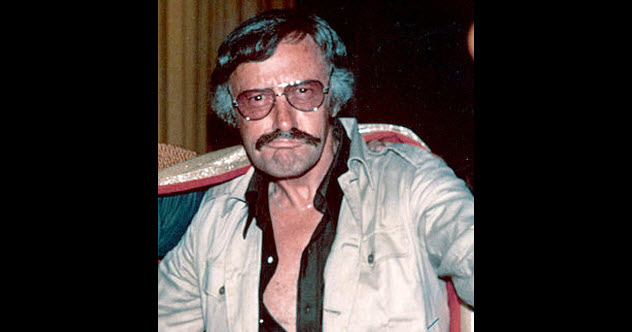
While the exact origins of the Fantastic Four are as mysterious as any of their adventures or strange tales, Stan Lee tells a charmingly humane version. Allegedly, Marvel was jealous of the success of the Justice League of America comics produced by rival DC Comics (then known as National Periodical Publications) and wanted to have their own superhero team in print.
The job was given to Stan Lee, who had a very different vision. Lee claims that even in 1961, when he and Jack Kirby originated the Fantastic Four, superhero comics were “creatively restrictive.” While he did not name them in comparison, Lee clearly disliked nearly infallible heroes like those in the Justice League. He wanted to create relatable characters who were “flesh and blood,” had “faults and foibles,” and were “fallible and feisty.”
Ultimately, beneath their “costumed booties,” Lee imagined his characters to “still have feet of clay.” Thus, Marvel’s first family had dysfunction built into them from the beginning to make the characters seem more natural and more human.
1 The Fantastic Four May Be A Rip-Off . . . And Helped Marvel Deny Its Cocreator Millions
The rivalry between DC Comics and Marvel Comics—as well as their tendency to share writers—meant that some story lines, characters, and even entire teams from one company can greatly resemble those of another company. One obvious case is how the design and loose concepts of the Fantastic Four mirror the DC comic Challengers of the Unknown, which was about four friends who survive an airplane crash, occasionally get superpowers from space, and save mankind wearing the same outfits that the Fantastic Four first wore when that comic debuted. This all has a simple explanation: Challengers was created by Jack Kirby, who cocreated The Fantastic Four.
But it gets complex from there. Stan Lee and Jack Kirby created the Fantastic Four using what came to be known as “the Marvel method.” The artist, who was Kirby in this case, would pitch the story to Lee, get Lee’s approval, and create the entire comic and much of the dialogue. Lee had final approval and added any dialogue that he wanted. Voila! The comic was created.
So, what was the problem?
With Kirby creating much of the story, dialogue, and notes, he thought that he should be paid as both a writer and an artist. Instead, Stan Lee received sole credit as writer, so Kirby left. Years later, Kirby was unable to retrieve his original art from Marvel, each page of which was now worth thousands of dollars. When Marvel finally relented under public pressure, they only returned, at most, 20 percent of the pages that Kirby had created for them.
The controversy kicked up again when his estate sued Disney for Kirby’s share of Marvel movie money. After all, he had helped to create everything from the Avengers to Groot, although his name is typically not even in the credits of movies based on his own characters. In 2014, two decades after the amazing creator’s death, Marvel reached a settlement with his family.
@PocketEpiphany is a dork that is sadly NOT made out of orange rock.




